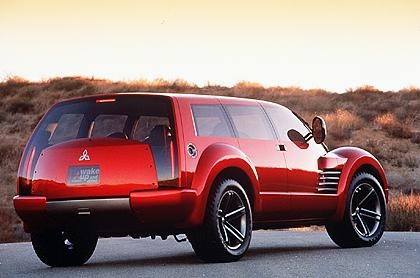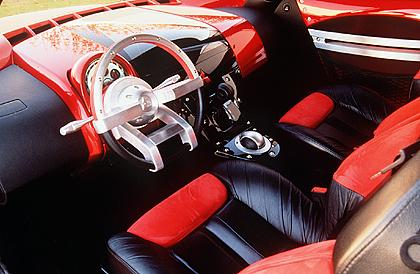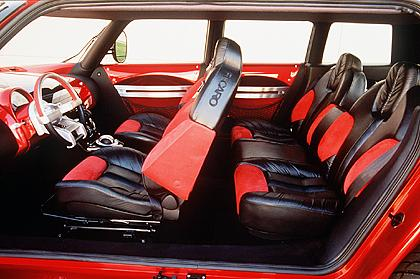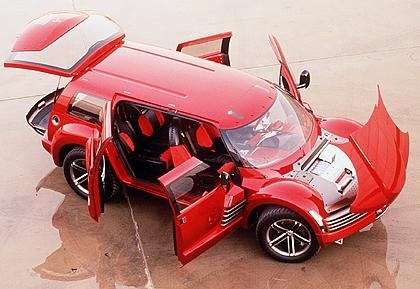1999 Mitsubishi SSU
- Story Cars

- Oct 10, 2021
- 2 min read
Designed by and fabricated at Mitsubishi Motors R & R&D of America, Inc, the bold SSU hit the crowds during the 1999 Chicago Auto Show. The sign in front of the display reads: "The twin-turbocharged, all-wheel-drive SSU concept car is an "extreme sports vehicle," combining the performance and handling of a sports car with the space and versatility of an SUV... think of it as a rally car for five people and all their equipment for a weekend of extreme sports." Not stated, the SSU was powered by a 2.5-liter V-6 that pumped out 310 horses and fed power to the all-wheel-drive system via a 5-speed automatic transmission. Mitsubishi Motors' Sport mode allowed the SSU to be shifted as a conventional automatic or clutchless manual. The use of center-opening doors, with no B-pillar, facilitated passenger entry and egress and the loading and unloading of luggage.
Source: www.chicagoautoshow.com
Image Sources: Mitsubishi Motors Corp.
Mitsubishi is well known for its exotic concept and show vehicles, such as its HSR series from years past, and it's not being shy with this year's Detroit show car. Its internal code name is "Mad Max," and it showcases styling cues of future Mitsubishi products, as well as true sports car/SUV hybrid possibilities. This concept vehicle is built on a modified existing platform, is fully operational, and commingles a powerplant from the respected all-wheel-drive, twin-turbo, 300-horsepower 3000GT VR-4 and load-carrying capabilities of a Montero. Unless "Max" has adjustable-height suspension, this one doesn't look like it's going very far off-road. However, it's designed to carry four passengers comfortably, while hauling a substantial amount of cargo-very rapidly. "Mad Max" is quite imposing at 188 inches long, 80 inches wide, with a wheelbase of just over 111 inches, and standing about 45 inches high, it's about as long as a Montero Sport but as low and wide as a 3000GT. Indicating the direction Mitsubishi design intends to pursue, the exterior styling cues that made their way through several concept vehicles are the Cord-like hood treatment (HSR-VI), the pronounced, angular wheel arches (SST concept car), the rear treatment incorporating a trunk pod that's a lockable compartment for valuables, and arched rear glass. Inside, a single, console-mounted computer screen controls audio functions and climate control and could be expanded to incorporate navigation and other computing functions, such as internet access (also seen on the SST). As with most concept vehicles, "Mad Max" is not intended to be a production car, at least not in this form. Rather it allows the automaker's designers, engineers, and marketers to think "outside the box" and expand the possibilities of its entire line of cars. Often, one or two ideas are feasible enough to make it to production on future products, but rarely is an entire vehicle born from a concept.
Chris Walton - Motor Trend (February 1999)

%20(4)_edited.png)








































Comments